The Steps You Need to Write a Research Paper
STEP ONE: CHOOSE A TOPIC
Select a specific, focused topic to research. Where do topic ideas come from? If ideas are not suggested in your study guide, you can often find a topic by looking through your textbooks, particularly in the sections that list suggestions for further reading and study. You can go through lecture notes, examine books and articles in the library, look through subject catalogs, or refer to encyclopedias. Often the most interesting topics for you personally are drawn from your own experience – your personal knowledge, interests, and beliefs.
STEP TWO: NARROW YOUR TOPIC BY DEVELOPING SOME RESEARCHABLE QUESTIONS THAT YOU WOULD LIKE TO ANSWER
Rather than beginning with a preconceived thesis (a truth claim) that you then must rationalize, narrow your topic by developing a set of questions related to it. You might start with the classic journalists’ questions Who? What? When? Where? How? Why? Or ask, What is positive about “X”? What is negative? What is merely interesting?
Consider your topic from different perspectives. The static perspective focuses on what is. The dynamic perspective looks at action and change. The relative perspective examines relationships and systems. Ask, for example: How can “X” be systematically described? How has “X” changed over time? What other factors are related to “X”? How is one element of “X” related to another?
Other strategies for question development can focus on narration, process, cause and effect, definition, classification and division, or comparison and contrast. For example: In what sequence of events does “X” manifest? What precedes and what follows “X”? Is it possible to say what causes “X”? How can “X” be systematically defined? What classes and subclasses of “X” exist, and how are they significant to the whole of “X”? How does “X” compare and contrast with “Y”?
Some ideas will seem worth pursuing; others will seem inappropriate for your purpose, audience, or occasion. You will find yourself discarding ideas even as you develop new ones.
STEP THREE: SURVEY THE FIELD
Create a tentative bibliography of your topic by searching relevant databases, library catalogues, and existing bibliographies in books. For computerized indexes, carefully choose key words that best capture the essence of your topic. Seek the help of a local professional librarian or Trinity’s librarian if necessary.
Skim all of the works on the tentative bibliography to acquire a clearer idea of the topic and to ascertain which are most useful for your paper.
Find the passages in the books and articles that are most germane to your needs. Revise your research questions in light of what your literature survey reveals. Search and revise again if necessary.
STEP FOUR: WRITE THE PAPER
The following is a general structure to follow for many kinds of research papers. Adapt it to specific assignments as appropriate.
Introduction
Announce the subject, set the tone and gain the reader’s attention and interest. Provide some general information on the background of your topic.
Statement of the Problem
Announce the purpose of your study. Give the reader a firm sense of what you’re doing and why. List the questions that you will address. List your assumptions, those self-evident conditions that you take for granted. Describe your rationale, the underlying principles, and the logical basis for your study. Define the scope of your work and discuss any weaknesses that you can perceive in your approach. Define the key terms that you will use in your paper. Stipulate meanings for ambiguous terms.
Summary of Investigation
Identify the principal works and authors, the main ideas dealing with your topic, and any generally accepted concepts and explanations. Organize your review by themes, systematic propositions, historical sequences, or other important ideas relative to the research questions that you asked. Take note that this is a creative exercise. Do not merely cite a reference, write a few sentences about its content, and then repeat the procedure for the next reference. Organize your summary of the thinking on your topic in such a way as to clarify for your reader the commonly accepted ideas, the current points of debates, and aspects of the topic yet to be investigated adequately.
Analysis of Findings
You must do more than ask and answer questions. You must show how your questions are answered differently and try to say why. You must be able to point to books and articles that support your classification of answers. In a research paper, the solution to the problem or the answer to the question often is found in the ordered discussion itself rather than in any set of assertions about it. Once again, identify any contradictions, gaps, uncertainties and controversies that you uncovered. Sort, arrange, and define the issues that arise. If a question is clear, and if you can be reasonably certain that authors answer it in different ways, then an issue has been defined. It is the issue between the authors who answer the question in one way and those who answer it in another opposing or variant way. Classify the authors according to their views on the issues. An issue is truly joined when two authors who understand a question in the same way answer it in contrary ways. Remember, however, that differences in answers can often be ascribed as much to different conceptions of the question as to different views of the subject.
Maintain objectivity
Remember that none of the opinions in conflict may be wholly true. Try to see all sides fairly. Make a deliberate effort to balance question against question, to forgo any comment that might be prejudicial, and to check any tendency toward overemphasis or under-emphasis. Avoid animosity and ad hominem arguments. Do not cite authors out of context. Accompany interpretation of authors’ views with actual quotations from their texts.
Conclusion
Ask yourself, What conclusions and implications can I draw from my study? Synthesize new information and personal insights in a way that is uniquely yours. Draw on your own insights, make connections, note similarities, discern what is true. Evaluate your findings with respect to your own theological and philosophical perspectives. However, avoid polemics, triviality, and weak theorizing. Make suggestions for future studies if appropriate.









